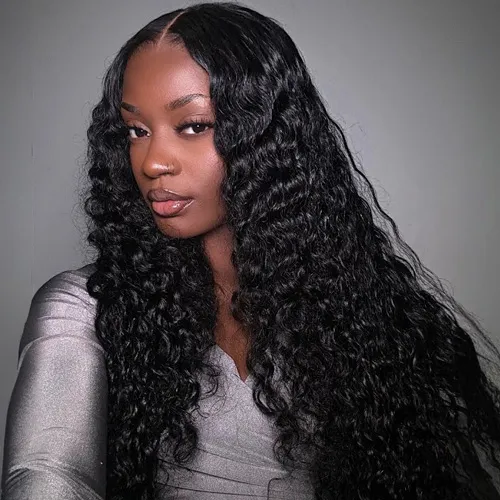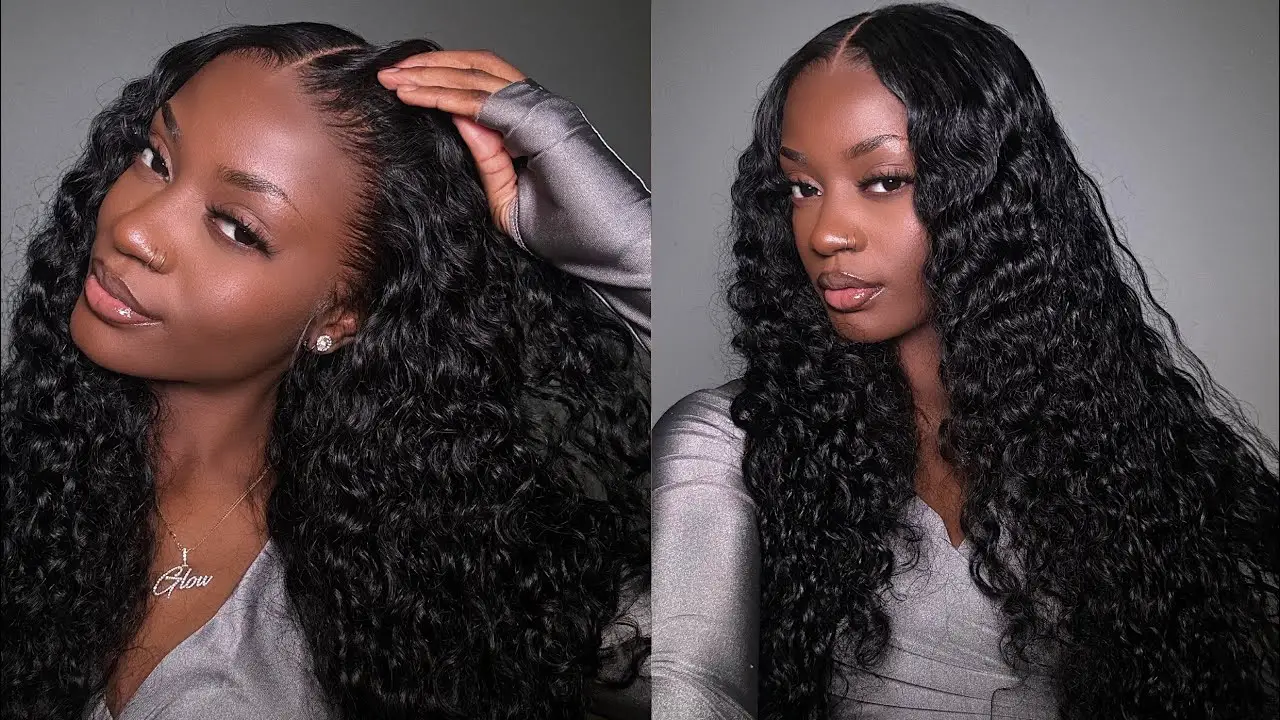Rejuvenating your Water Wave Wig requires patience, the right products, and gentle handling. By following the detailed steps outlined in this guide, you can ensure your wig remains vibrant, bouncy, and beautiful. Remember, the key to a long-lasting wig is regular care and maintenance. With the right approach, your Water Wave Wig can continue to be a versatile and stunning part of your beauty regimen.

There are something you should know first.
Before diving into the rejuvenation process, it’s important to understand what your wig is made of. Water wave wigs can be synthetic or made from human hair, and each type demands a slightly different approach to care and maintenance.
Synthetic wigs:
These are made from man-made fibers that mimic the appearance of human hair. While less expensive, they can be more challenging to rejuvenate due to their inability to withstand certain chemicals and high temperatures.
Human hair wigs:
As the name suggests, these wigs are made from real human hair and can be treated much like your natural hair. They are more resilient and respond well to a wider range of products and styling tools.
Step 1: Detangling.
Begin by gently removing any tangles or knots from your wig. Use a wide-tooth comb or a wig brush, starting from the ends and working your way up to the roots to minimize shedding and breakage.
Step 2: Washing.
Synthetic wig:
Fill a basin with cool or lukewarm water and add a capful of wig shampoo.
Submerge your wig, gently swishing it around for a few minutes. Avoid rubbing, which can cause tangles.
Rinse thoroughly in cool water until all the shampoo is removed.
Human hair wig:
Wet the wig under lukewarm running water.
Apply a sulfate-free shampoo, gently working it through the hair.
Rinse thoroughly under lukewarm water.
Step 3: Conditioning.
After shampooing, applying a conditioner is crucial for adding moisture back into the wig, especially for human hair wigs.
For both wig types:
Apply a generous amount of wig conditioner, avoiding the base to prevent loosening the knots.
Leave the conditioner in for a few minutes, then rinse thoroughly with cool water.
Step 4: Drying.
Do not wring out your wig: Instead, gently pat it with a towel to remove excess water. For synthetic wigs, avoid using heat. Place the wig on a wig stand and let it air dry naturally. For human hair wigs, you can use a blow dryer on a low heat setting to speed up the drying process, but keep the dryer at least 6 inches away from the hair to prevent heat damage.
Step 5: Revitalizing the curls.
For synthetic wigs: Use a wig mousse specifically designed for synthetic fibers to scrunch the hair gently, helping to redefine the waves.
For human hair wigs: While damp, apply a curl-enhancing product and scrunch the hair to redefine the waves. You can also use flexi-rods or curlers to reshape the curls if they’ve become too loose.
Step 6: Maintenance and storage.
Regular maintenance: To keep your wig looking fresh, wash it after about 4-6 wears. In between washes, use a wig spray to refresh the curls and minimize frizz.
Proper storage: When not in use, store your wig on a wig stand or mannequin head to help maintain its shape and prevent tangles.

Why do human hair wigs become dry?
Human hair wigs can become dry for a variety of reasons, largely stemming from the fact that, unlike natural hair growing from the scalp, wigs do not receive natural oils and nutrients from the body. This intrinsic difference makes them more susceptible to dryness and damage. Understanding the reasons behind the dryness can help in adopting the right care and maintenance routines to prolong the life and beauty of human hair wigs. Here are the primary reasons why human hair wigs become dry:
1. Lack of natural oils.
The scalp naturally produces oils that help keep hair moisturized and protected. Since wigs do not have a natural source of these oils, they can quickly become dry and brittle without proper care.
2. Overwashing.
Washing a human hair wig too frequently can strip it of the limited moisture it retains from conditioning treatments, leading to dryness. It’s important to wash wigs only as needed and with the correct products.
3. Harsh products.
Using hair care products that contain harsh chemicals, such as sulfates and alcohols, can strip the hair of its natural moisture, leaving it dry and brittle. Sulfate-free shampoos and conditioners are recommended for wigs to help preserve their moisture balance.
4. Heat styling.
Just like natural hair, human hair wigs can suffer from heat damage due to styling tools such as blow dryers, flat irons, and curling irons. Frequent use of high heat can dry out the hair, leading to damage and breakage.
5. Environmental factors.
Exposure to the sun, wind, and dry air can sap moisture from your wig, leaving it dry and faded. Similarly, chlorine from swimming pools and salt from ocean water can have a drying effect on human hair wigs.
6. Poor storage.
Improper storage can contribute to a wig’s dryness. Storing a wig in a dry, hot place can lead to moisture loss, while not using a wig stand or form can cause the fibers to become tangled and matted, which exacerbates the appearance of dryness.
7. Aging.
Over time, human hair wigs naturally lose their vitality. With each wash and styling session, they can become progressively drier and more prone to damage. This is a natural part of the wig’s lifecycle, exacerbated by how often the wig is worn and how well it is maintained.
How to prevent dryness?
To combat dryness in human hair wigs, consider adopting the following practices:
Moisturize regularly: Use leave-in conditioners or oils designed for wigs to help add moisture back into the hair.
Limit washing: Only wash your wig when necessary, using sulfate-free shampoos and conditioners.
Protect from heat: Use heat protectant products and limit the use of heat styling tools. When using such tools, opt for the lowest effective temperature setting.
Proper storage: Store your wig on a wig stand in a cool, dry place away from direct sunlight.
Avoid harsh chemicals: Choose styling products that are free of harsh chemicals and alcohols.
Cover up: When outdoors, consider wearing a hat or scarf to protect your wig from harmful UV rays and environmental pollutants.






